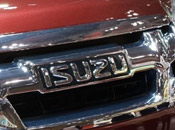Save on 2007 Isuzu Ascender Insurance Quotes
Searching for low-cost insurance for an Isuzu Ascender could be difficult, but you can learn the following methods to find lower rates.
There are both good and bad ways to find car insurance online so we’re going to tell you the quickest way to compare rates on a Isuzu and get the cheapest rates either online or from local insurance agents.
If you have a policy now or are looking for a new policy, you can use these tips to reduce the price you pay and still get good coverage. Locating affordable insurance coverage coverage can be fairly easy. Consumers only need to know the tricks to compare prices online.
How to Compare Insurance Quotes
Comparing insurance rates can be challenging if you don’t utilize the most efficient way to do it. You can waste hours talking about coverages with local insurance agents in your area, or you can stay home and use the web to quickly compare rates.
The majority of car insurance companies enroll in a system where prospective buyers submit one quote, and each participating company returns a competitive quote for coverage. This saves time by eliminating repetitive form submissions to every company.
To compare 2007 Isuzu Ascender rates using this form now click here (opens in new window).
The one disadvantage to pricing coverage this way is that you can’t choose which companies you will receive quotes from. So if you prefer to choose specific insurance companies for rate comparison, we put together a list of companies who write insurance in your area. Click to view list.
It’s your choice how you get your quotes, but make absolute certain that you use exactly the same deductibles and coverage limits with every price quote. If you compare differing limits you will not be able to determine the best price for your Isuzu Ascender.
Tailor your coverage to you
When it comes to buying coverage, there is no perfect coverage plan. Every insured’s situation is different.
For instance, these questions can aid in determining if your insurance needs might need professional guidance.
- What are the financial responsibility laws in my state?
- Does insurance cover tools stolen from my truck?
- Is business property covered if stolen from my car?
- Am I covered when driving a rental car?
- If I drive on a suspended license am I covered?
- Why am I required to get a high-risk car insurance policy?
If it’s difficult to answer those questions but one or more may apply to you, you might consider talking to an insurance agent. If you want to speak to an agent in your area, fill out this quick form. It is quick, free and can provide invaluable advice.
Educate yourself about insurance coverages
Understanding the coverages of your policy can be of help when determining appropriate coverage for your vehicles. The terms used in a policy can be confusing and nobody wants to actually read their policy.
Protection from uninsured/underinsured drivers – This gives you protection from other drivers when they either have no liability insurance or not enough. Covered losses include injuries sustained by your vehicle’s occupants and also any damage incurred to your Isuzu Ascender.
Because many people only purchase the least amount of liability that is required, their limits can quickly be used up. For this reason, having high UM/UIM coverages is a good idea. Frequently these coverages do not exceed the liability coverage limits.
Medical expense insurance – Coverage for medical payments and/or PIP provide coverage for bills like ambulance fees, rehabilitation expenses and surgery. They are used in conjunction with a health insurance policy or if you lack health insurance entirely. They cover all vehicle occupants and will also cover getting struck while a pedestrian. PIP is only offered in select states but it provides additional coverages not offered by medical payments coverage
Comprehensive (Other than Collision) – Comprehensive insurance covers damage from a wide range of events other than collision. You first have to pay a deductible then the remaining damage will be covered by your comprehensive coverage.
Comprehensive coverage pays for things such as falling objects, vandalism and a broken windshield. The highest amount you’ll receive from a claim is the market value of your vehicle, so if your deductible is as high as the vehicle’s value it’s probably time to drop comprehensive insurance.
Auto liability – This can cover damage that occurs to a person or their property that is your fault. It protects YOU against other people’s claims, and does not provide coverage for your injuries or vehicle damage.
Coverage consists of three different limits, bodily injury for each person, bodily injury for the entire accident, and a limit for property damage. You might see liability limits of 50/100/50 that means you have a $50,000 limit per person for injuries, a per accident bodily injury limit of $100,000, and a total limit of $50,000 for damage to vehicles and property. Some companies may use a combined limit which provides one coverage limit and claims can be made without the split limit restrictions.
Liability coverage protects against things like repair bills for other people’s vehicles, medical services and medical expenses. How much liability coverage do you need? That is your choice, but buy higher limits if possible.
Collision coverages – This pays to fix your vehicle from damage from colliding with a stationary object or other vehicle. You will need to pay your deductible and the rest of the damage will be paid by collision coverage.
Collision coverage pays for claims like crashing into a ditch, crashing into a building and colliding with another moving vehicle. Paying for collision coverage can be pricey, so analyze the benefit of dropping coverage from older vehicles. Another option is to bump up the deductible in order to get cheaper collision rates.

